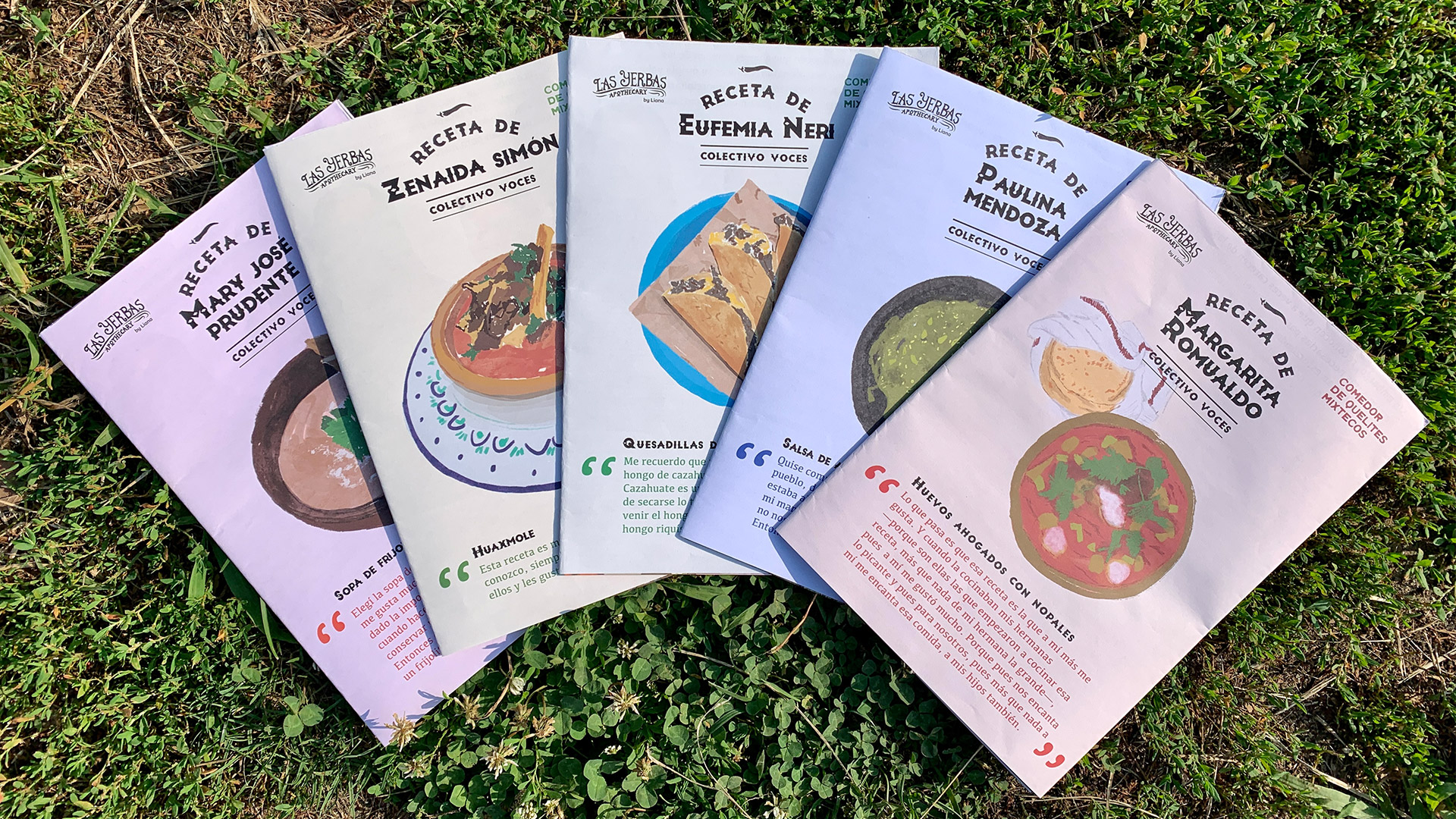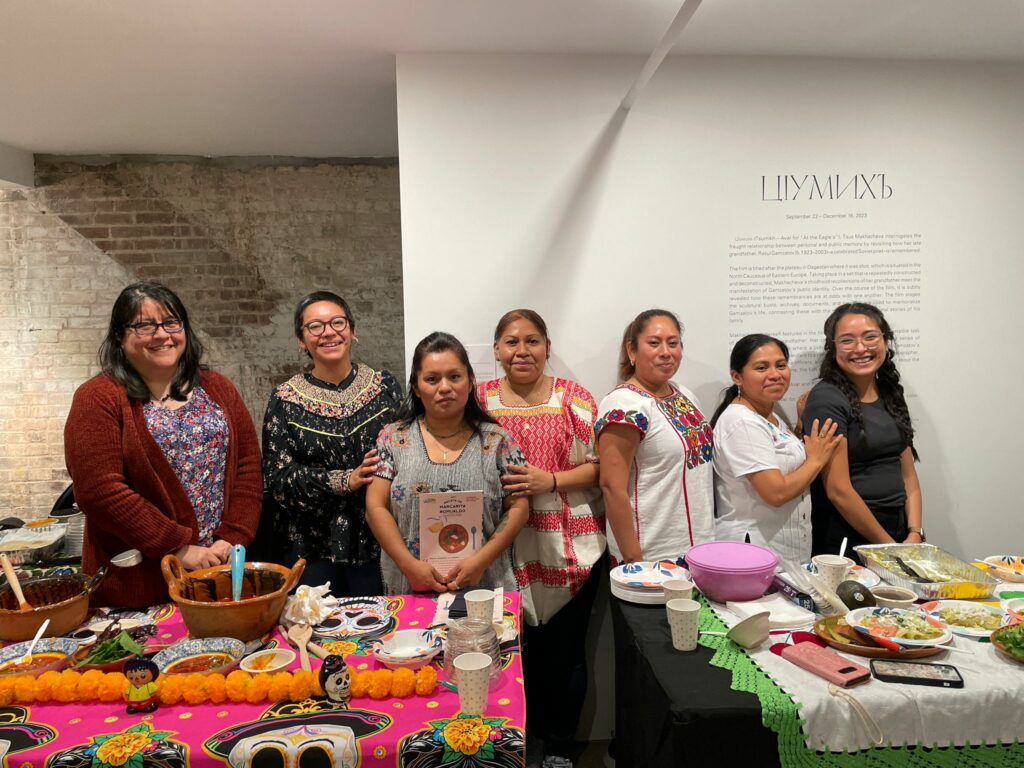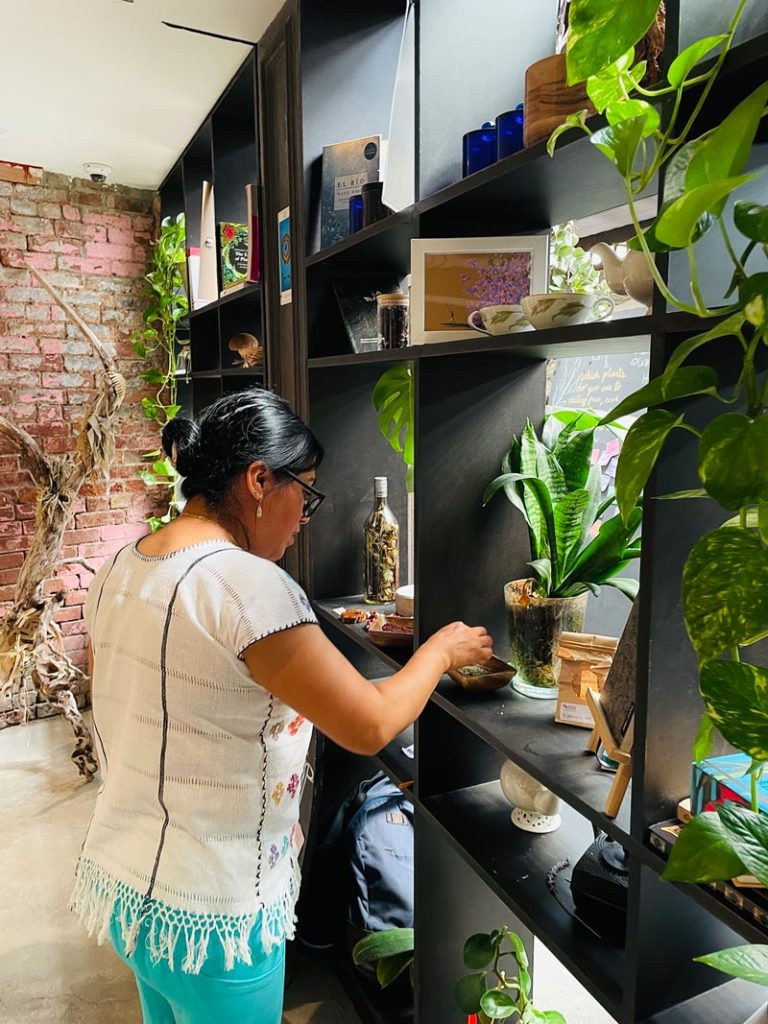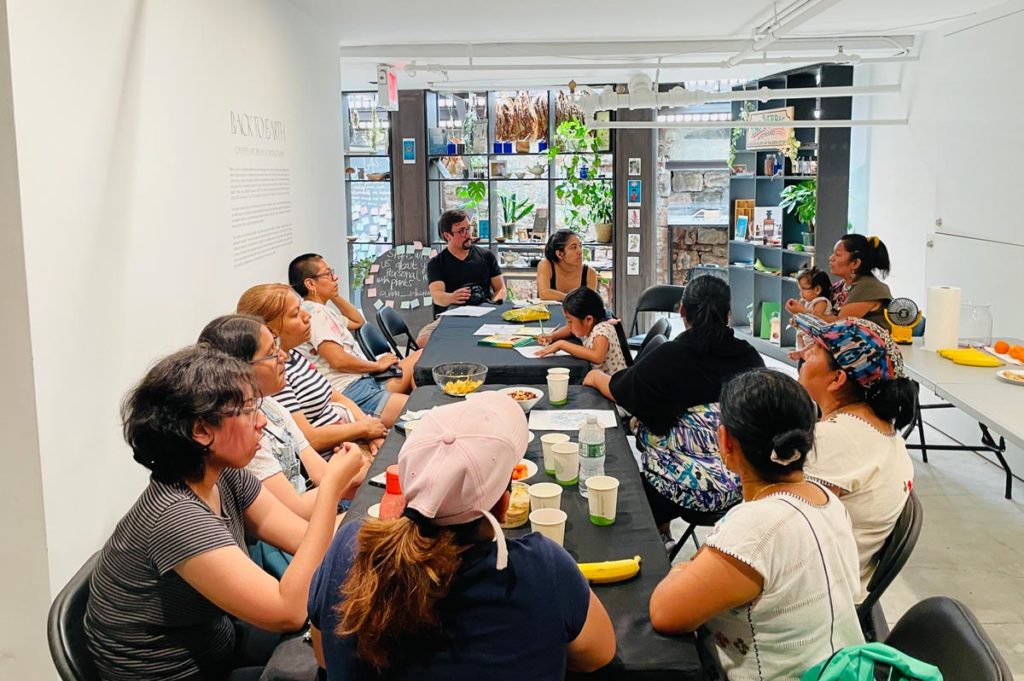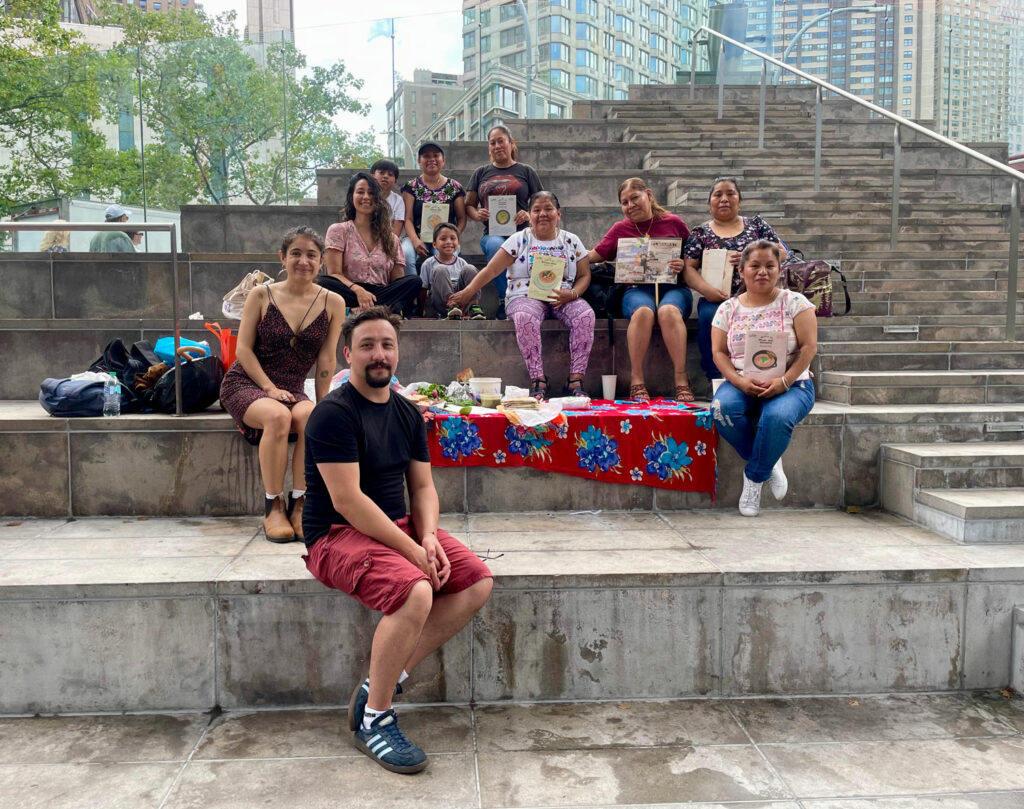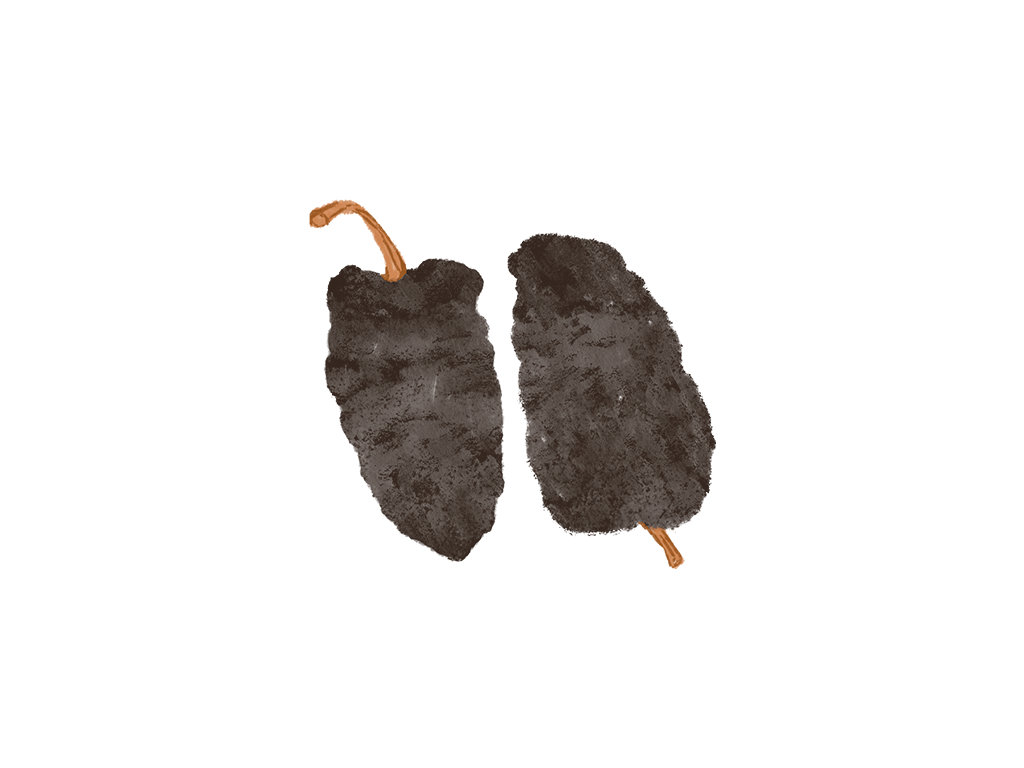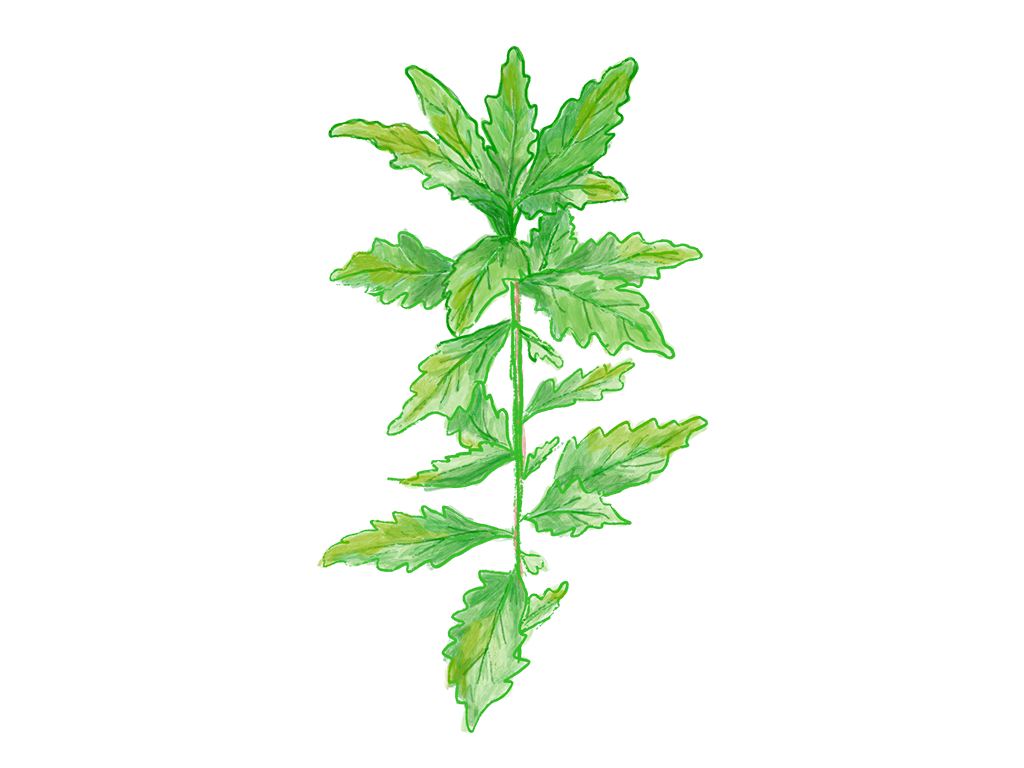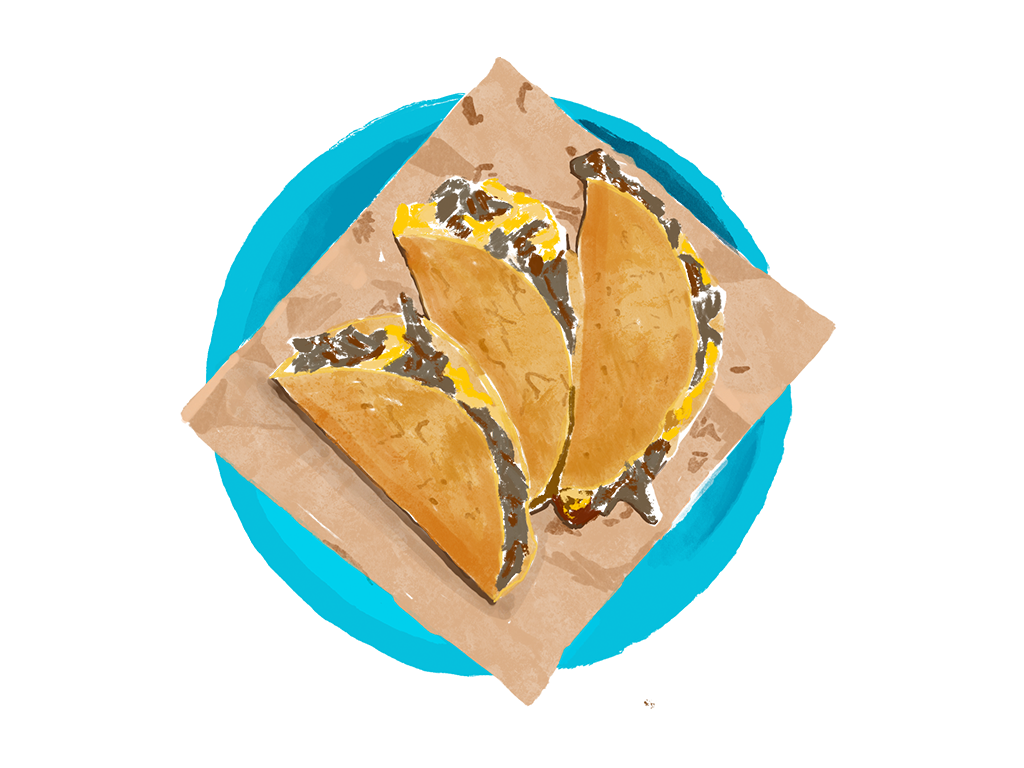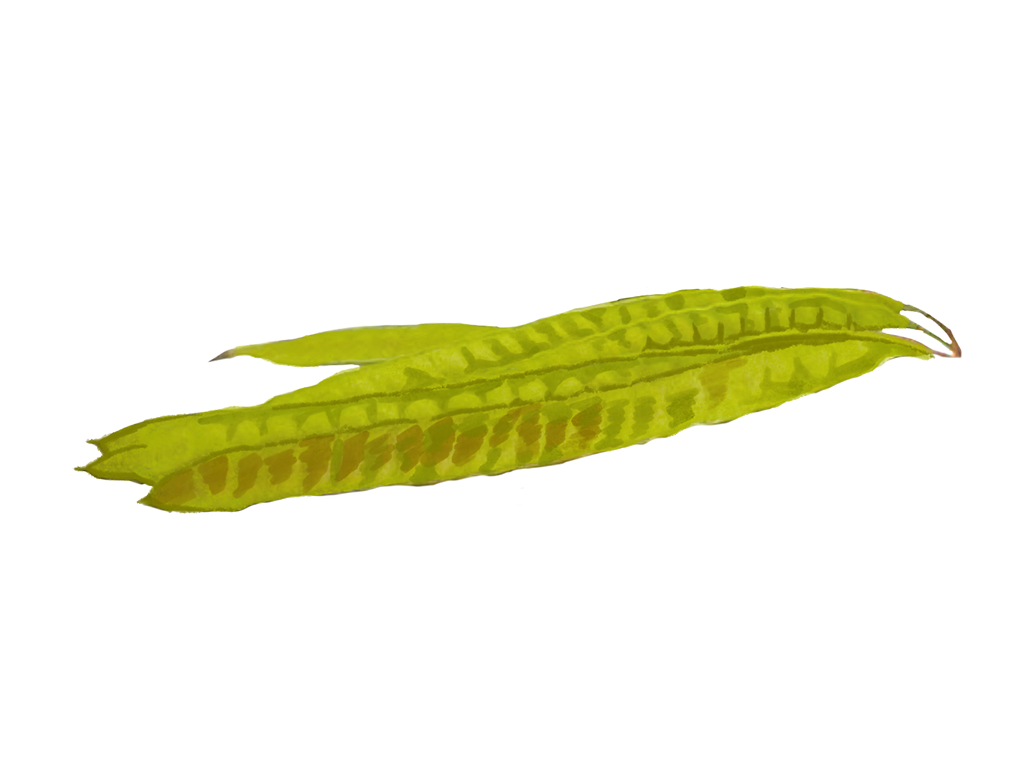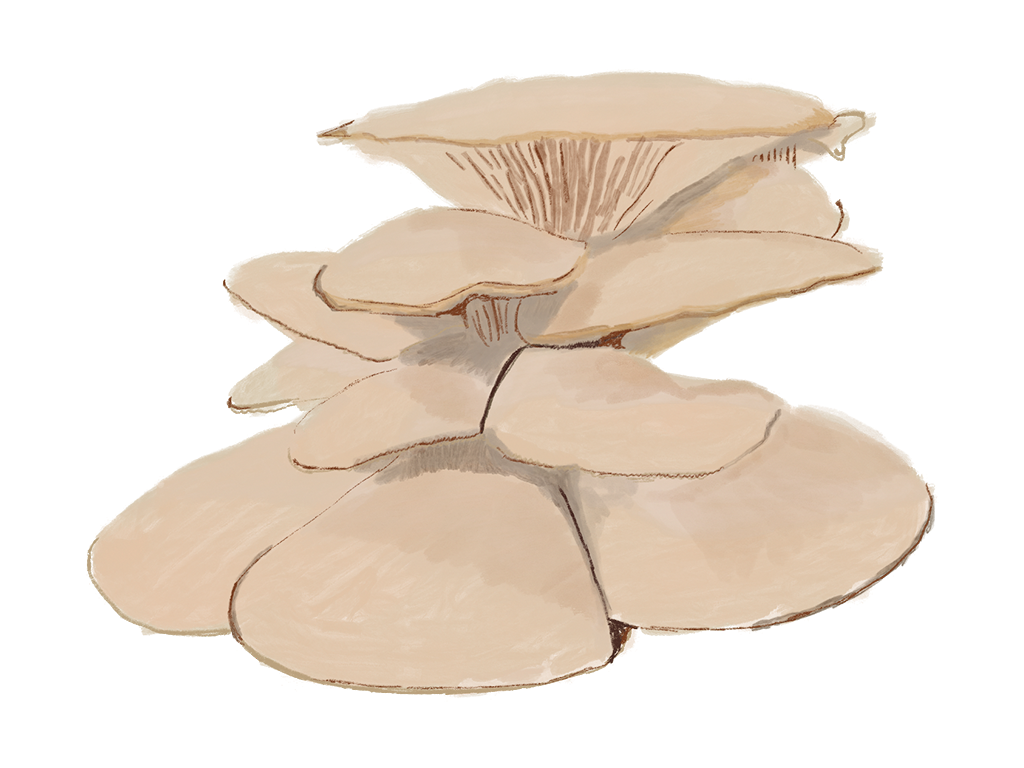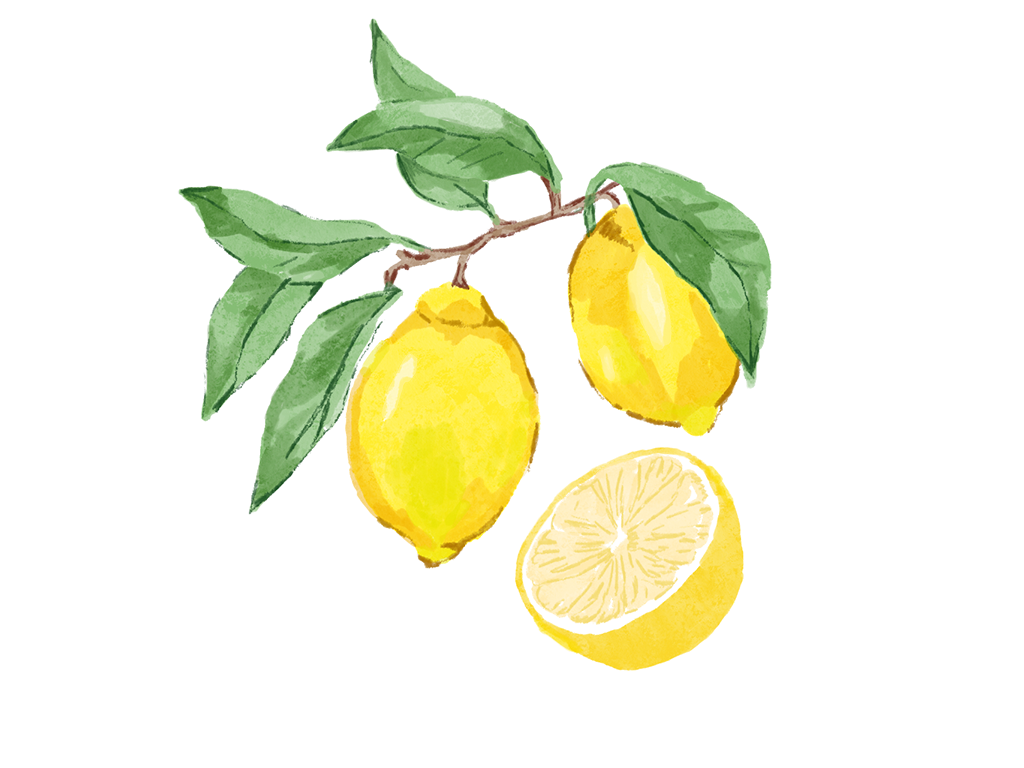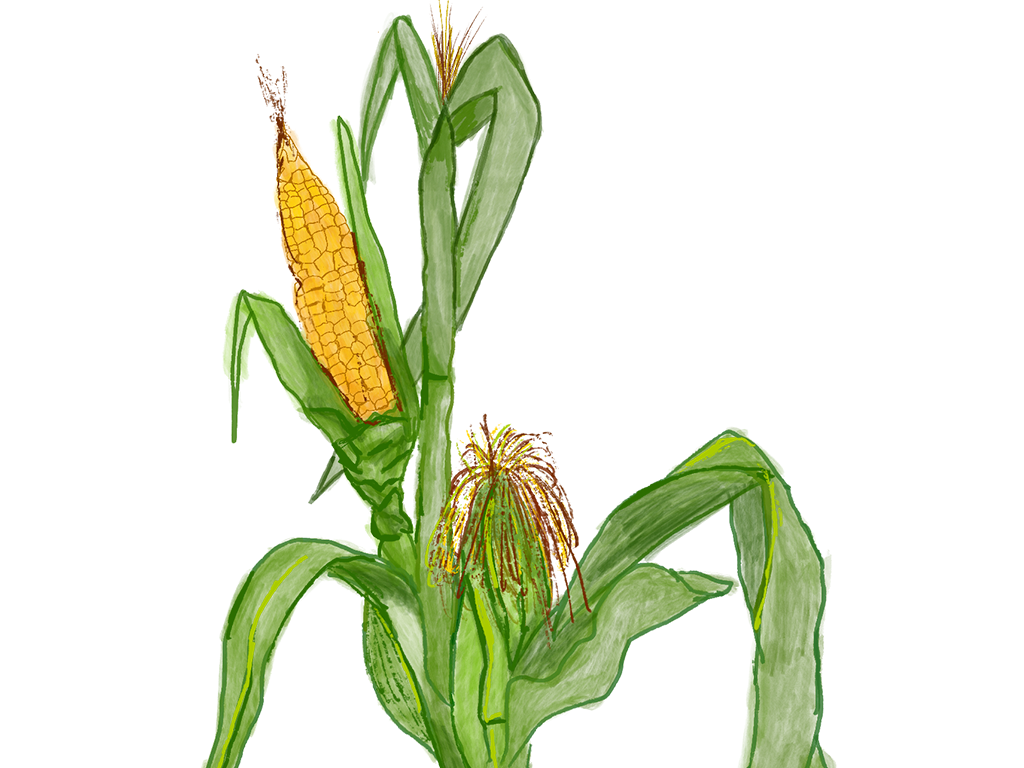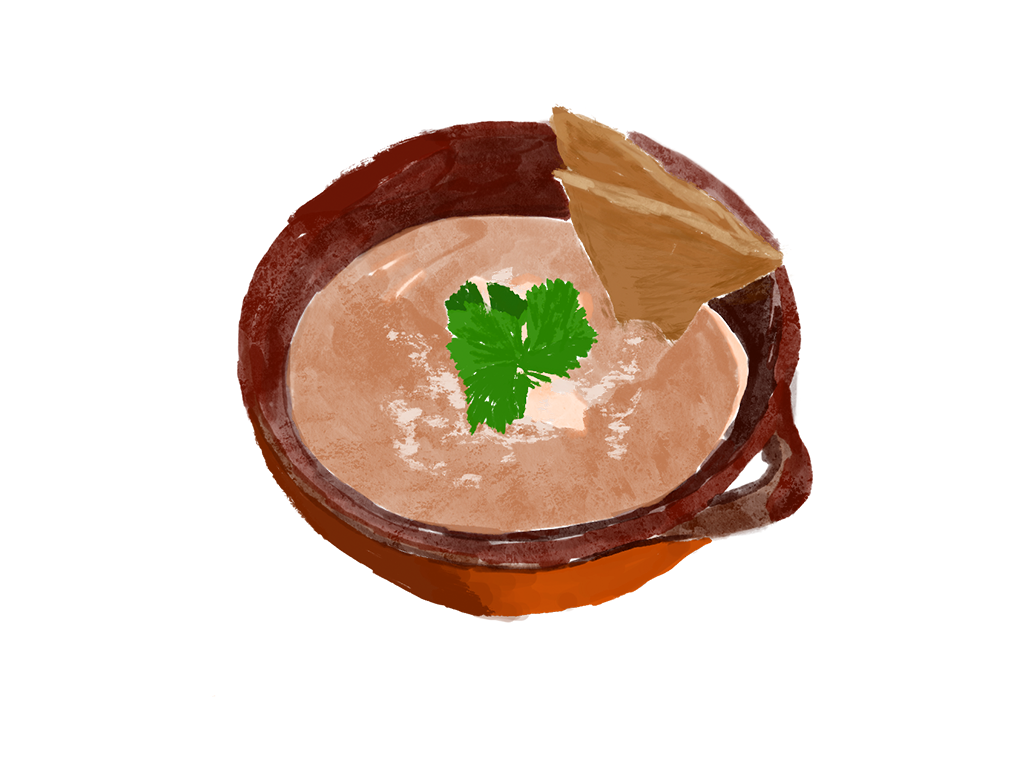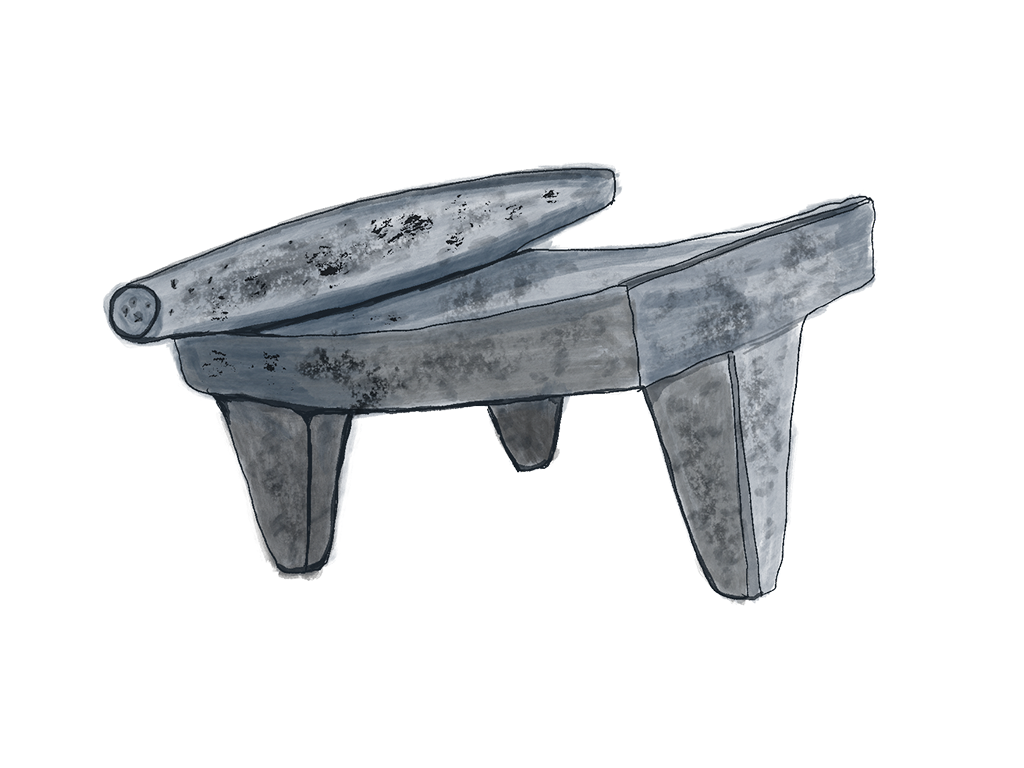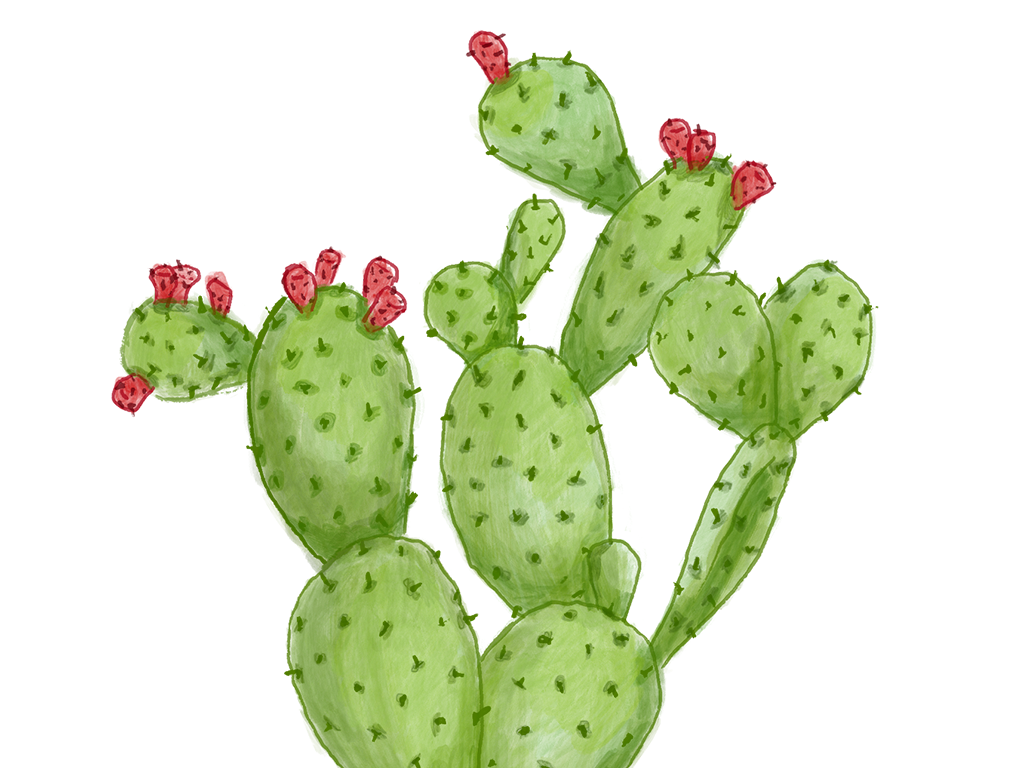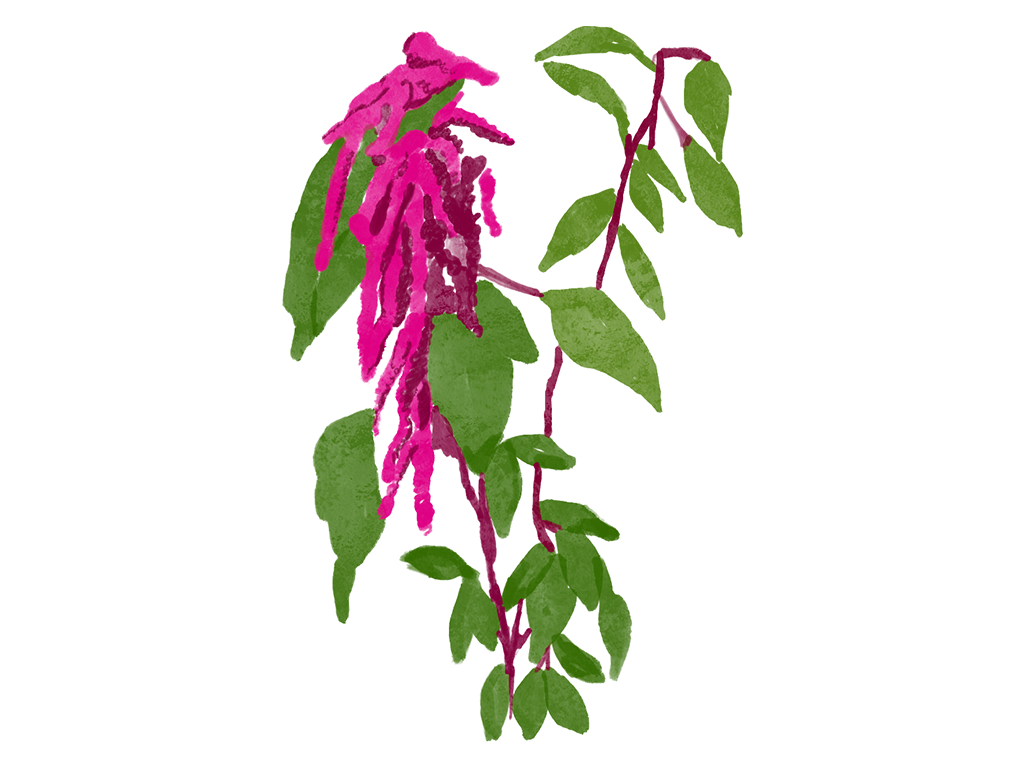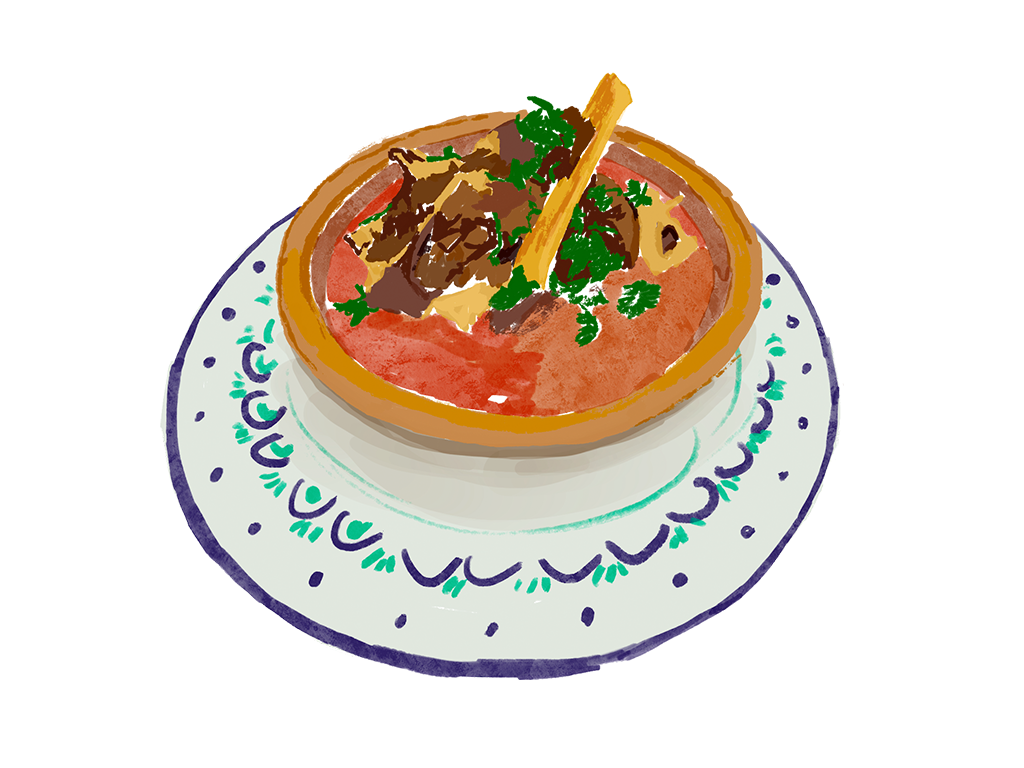Partners: Red de Pueblos Transnacionales, Colectivo Voces.
Timeline: Sept 2023 to Aug 2024.
Approach: Community Engagement, Oral History, Print Making.
Topics: mixtec culture, migration, plant-women relationships, indigenous knowledge.
Team: Liana Collective (Juan Pablo Caicedo, Angélica Cuevas and Giselly Mejia).
My role: Oral historian, designer, illustrator and researcher.
Project Statement
In the installation Las Yerbas Apothecary, Liana Collective started a collaboration with Voces, a collective of Mixteco migrant women from Guerrero, Mexico. Voces gathers to preserve Mixtec language, medicinal plants, and traditional recipes with a decolonial lens and a vision for intergenerational knowledge transfer.
The ongoing collaboration started with a series of oral history interviews where Voces women shared their relationship with plants, their history of migration, and their resistance as women in a patriarchal culture. We worked to produce a series of recipe zines aiming to disseminate how the indigenous women of the mountains of Guerrero use plants to preserve their culture.
The zine series is made of five zines (one for each member women of Voces Collective) which integrates the sections:
- Early Life
- Relationships with family and the territory
- Growing up as a woman in rural México
- History of migration from Guerrero to the United States
- Traditions and culture
- Motherhood
- Traditional recipe
- Recipe plant bios
- Voces statement
Projects details
Oral History
For this project, I chose oral history methodology as the foundation for our work with Voces, as its principles of consent, trust, and “do no harm” aligned perfectly with our approach. I developed discussion guides to shape our dialogues and created a detailed consent form that outlined the nature of our interactions, how the data would be handled, and allowed participants to select their privacy preferences.
We conducted two-hour conversations with each of the five members of the Voces collective. From the transcriptions and thematic analysis of these conversations, we developed the structure of the zines.
Comedores
Since plants are at the heart of this project, we hosted two “comedores” where food was made and shared with plenty of generosity. The first one was for the closing event of the Las Yerbas Apothecary installation, where we invited the public to try the five recipes from the zine. The second was to wrap up the project in the summer of 2024. We all brought food, shared a meal, and took the time to thank each other for the collaboration.
Illustrations
I created all the illustrations for the zine, focusing on honoring the plants used in the recipes. I suggested writing brief bios for each plant, highlighting their history, origins, and uses. Just like we did with the bios for the members of Voces, I wanted to give the plants their own space to shine and tell their stories.
Zine series and co-design
Every step of the way, our work with Voces was a collaborative process. We continuously sought their input on the images, illustrations, and content of the zine, refining and iterating together. This co-creation ensured that the final product truly reflected the voices and perspectives of everyone involved, making it a shared and collective effort.
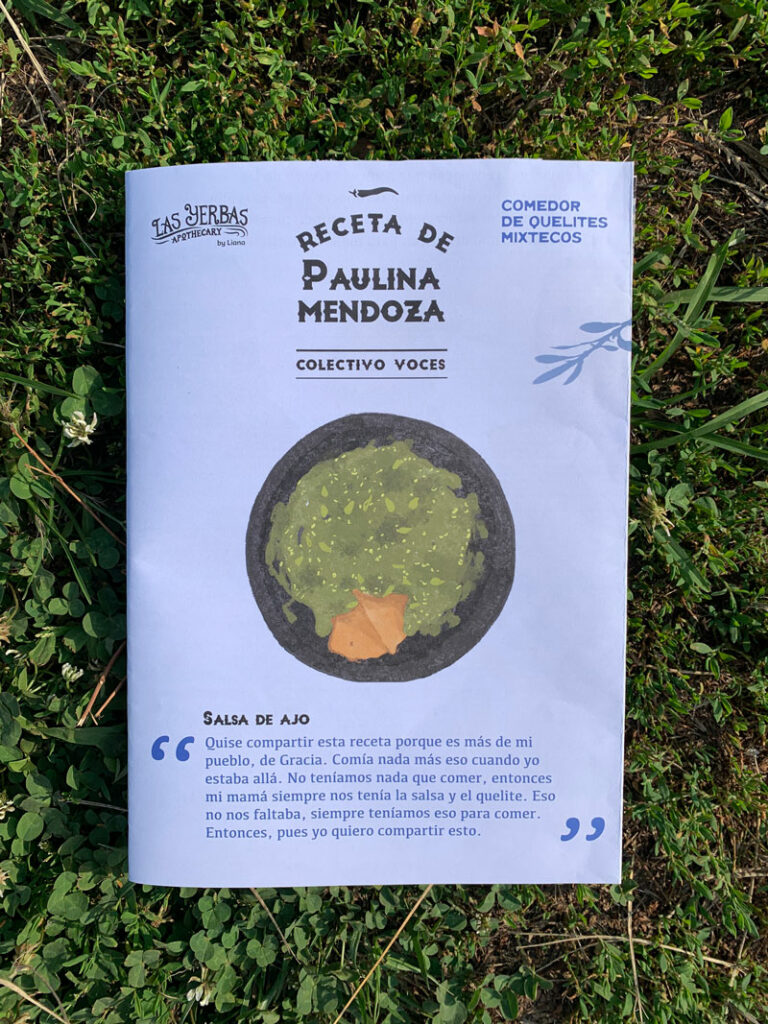
Receta de Paulina Mendoza
Salsa de ajo
“Quise compartir esta receta porque es más de mi pueblo, de Gracia. Comía nada más eso cuando yo estaba allá. No teníamos nada que comer, entonces mi mamá siempre nos tenía la salsa y el quelite. Eso no nos faltaba, siempre teníamos eso para comer. Entonces, pues yo quiero compartir esto.”
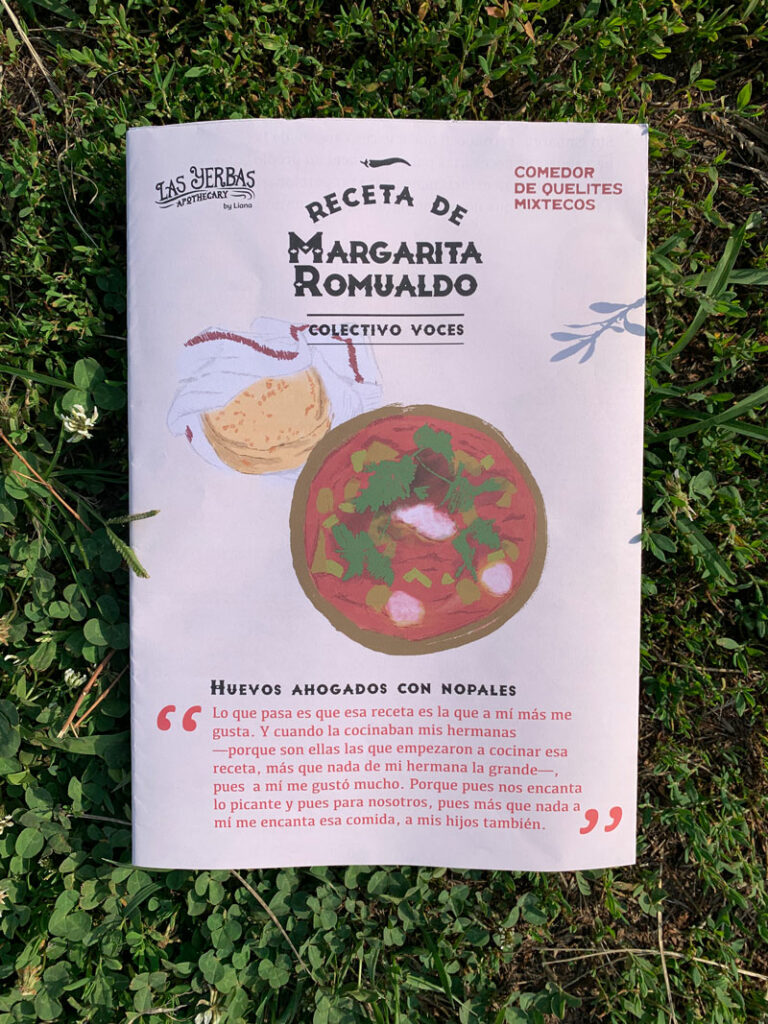
Receta de Margarita Romualdo
Huevos ahogados con nopales
“Lo que pasa es que esa receta es la que a mí más me gusta. Y cuando la cocinaban mis hermanas —porque son ellas las que empezaron a cocinar esa receta, más que nada de mi hermana la grande—, pues a mí me gustó mucho. Porque pues nos encanta lo picante y pues para nosotros, pues más que nada a mí me encanta esa comida, a mis hijos también.”

Receta de Margarita Romualdo
Huaxmole
“Esta receta es muy buena. A las personas que yo conozco, siempre he compartido esta comida con ellos y les gusta mucho.”
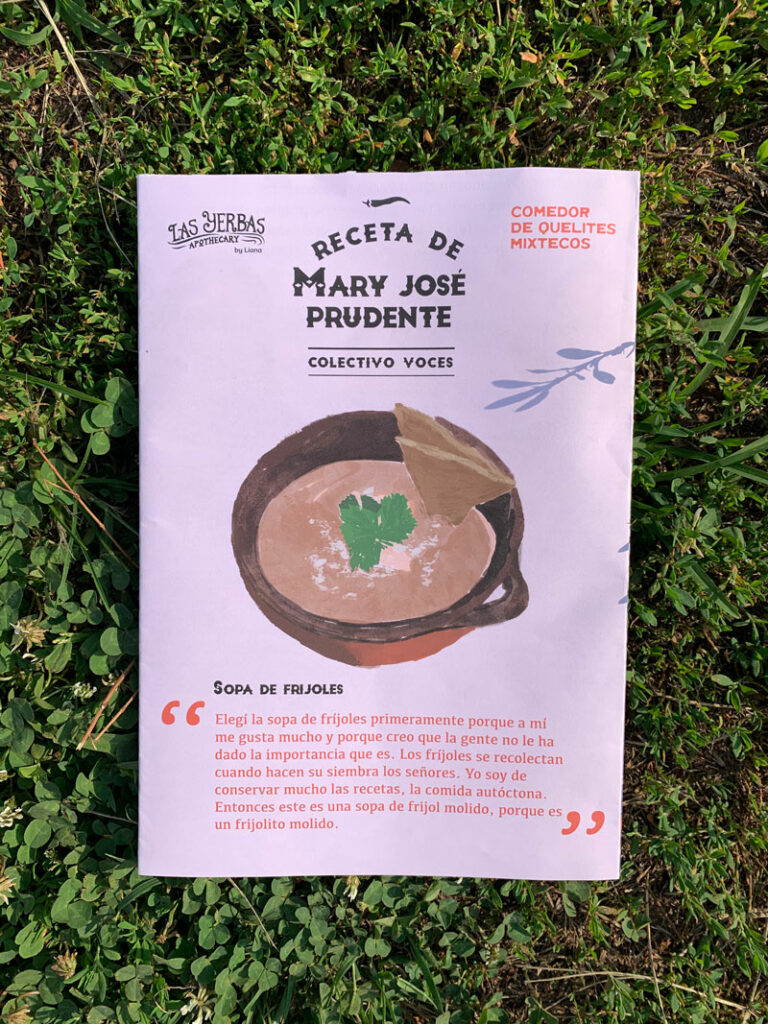
Receta de Margarita Romualdo
Sopa de frijoles
“Elegí la sopa de fríjoles primeramente porque a mí me gusta mucho y porque creo que la gente no le ha dado la importancia que es. Los fríjoles se recolectan cuando hacen su siembra los señores. Yo soy de conservar mucho las recetas, la comida autóctona. Entonces este es una sopa de frijol molido, porque es un frijolito molido.”
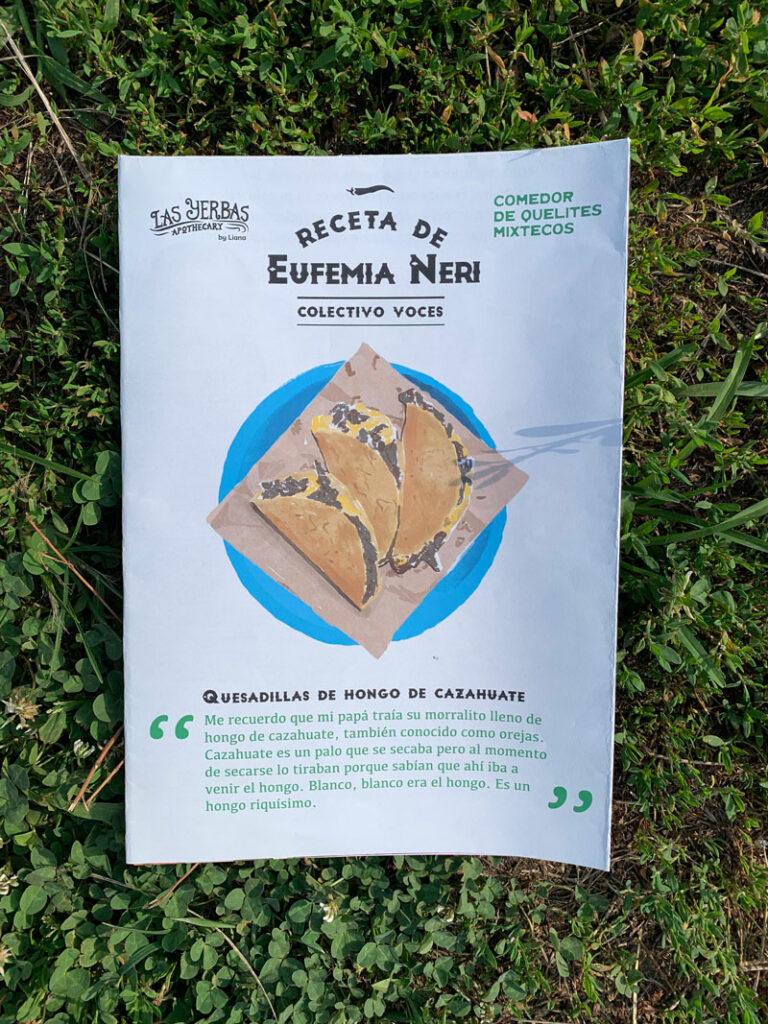
Receta de Eufemia Neri
Quesadillas de hongo de cazahuate
“Me recuerdo que mi papá traía su morralito lleno de hongo de cazahuate, también conocido como orejas. Cazahuate es un palo que se secaba pero al momento de secarse lo tiraban porque sabían que ahí iba a venir el hongo. Blanco, blanco era el hongo. Es un hongo riquísimo.”
